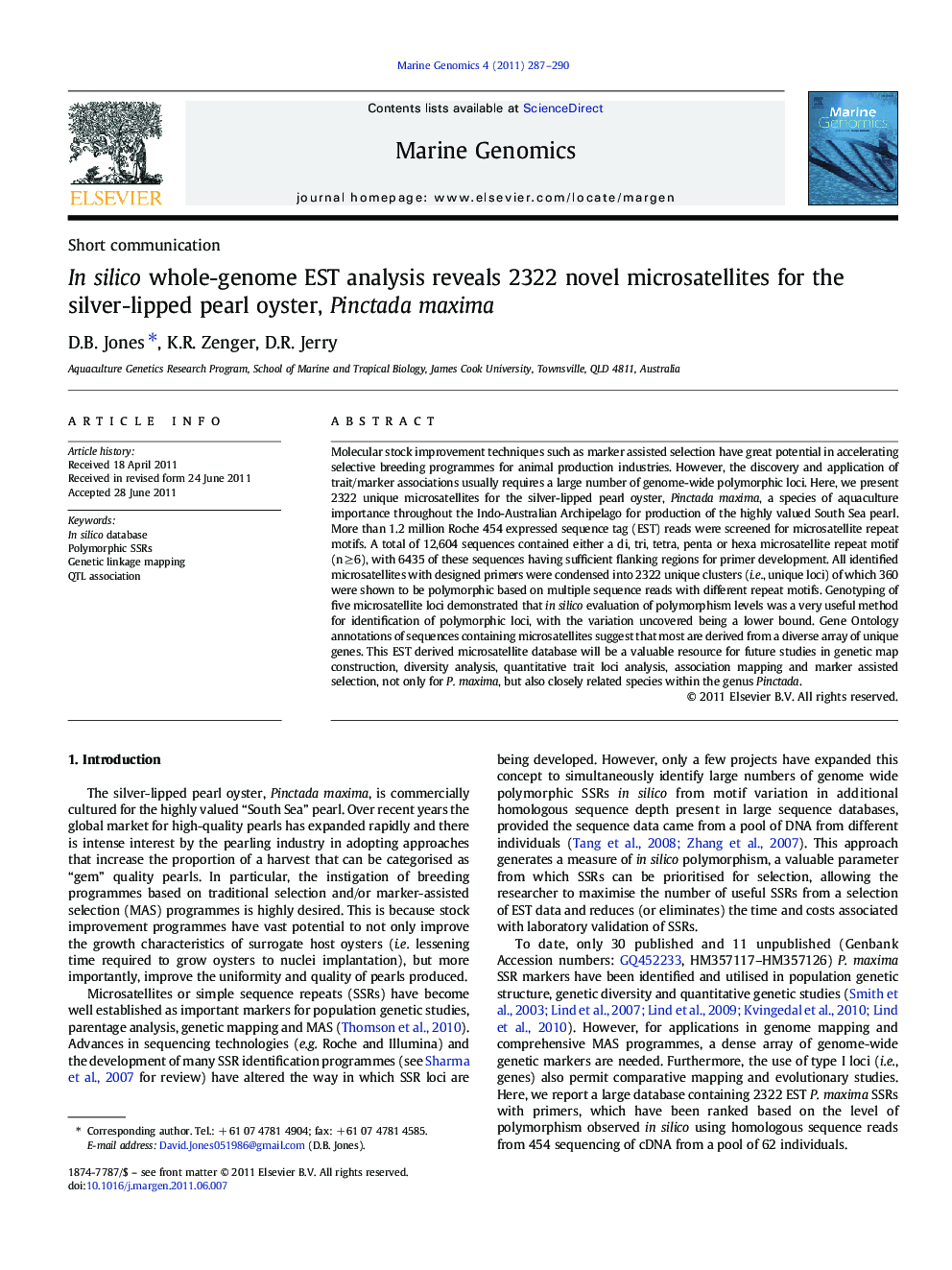| Article ID | Journal | Published Year | Pages | File Type |
|---|---|---|---|---|
| 2058256 | Marine Genomics | 2011 | 4 Pages |
Molecular stock improvement techniques such as marker assisted selection have great potential in accelerating selective breeding programmes for animal production industries. However, the discovery and application of trait/marker associations usually requires a large number of genome-wide polymorphic loci. Here, we present 2322 unique microsatellites for the silver-lipped pearl oyster, Pinctada maxima, a species of aquaculture importance throughout the Indo-Australian Archipelago for production of the highly valued South Sea pearl. More than 1.2 million Roche 454 expressed sequence tag (EST) reads were screened for microsatellite repeat motifs. A total of 12,604 sequences contained either a di, tri, tetra, penta or hexa microsatellite repeat motif (n ≥ 6), with 6435 of these sequences having sufficient flanking regions for primer development. All identified microsatellites with designed primers were condensed into 2322 unique clusters (i.e., unique loci) of which 360 were shown to be polymorphic based on multiple sequence reads with different repeat motifs. Genotyping of five microsatellite loci demonstrated that in silico evaluation of polymorphism levels was a very useful method for identification of polymorphic loci, with the variation uncovered being a lower bound. Gene Ontology annotations of sequences containing microsatellites suggest that most are derived from a diverse array of unique genes. This EST derived microsatellite database will be a valuable resource for future studies in genetic map construction, diversity analysis, quantitative trait loci analysis, association mapping and marker assisted selection, not only for P. maxima, but also closely related species within the genus Pinctada.
► We present a database containing 2322 unique Pinctada maxima EST-SSRs. ► A minimum of 360 EST-SSRs are polymorphic based on in silico sequence read analysis. ► Gene ontology analysis matched 126 EST-SSRs from which 93.6% were unique genes. ► This EST-SSR database will be a valuable resource for oyster genome mapping studies.
